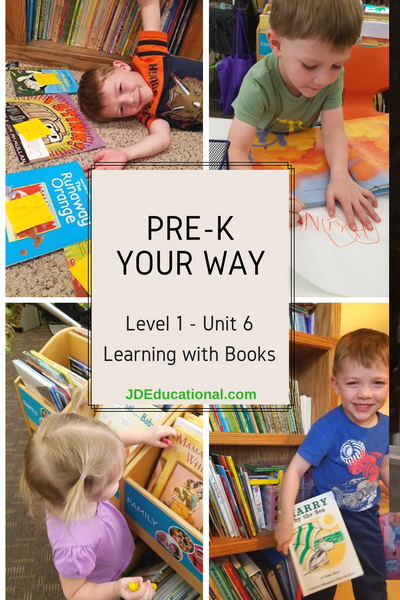Autism Spectrum Disorder is just that, a spectrum. Some children who have an ASD diagnosis are able to communicate with gestures while some don't try to initiate communication with others at all. As children grow, some will learn words and use them appropriately and others shy away from social communication. No matter where your child is on the spectrum, visuals and tangible tools will help them express themselves.
As an early intervention specialist, working with children on the Autism spectrum, I know how hard and frustrating it can be as a parent who is unable to understand why their child is upset, and how hard it is to communicate with children that are feeling overwhelmed. There are so many tools and techniques that are available, but how are we supposed to teach children with ASD how to utilize them when they don't want to interact with us?

Here are two different ways that will help your child express their emotions in a way that is easy for you to teach and simple for them to use ( even independently.)
1. Use Tangible Tools:
Our Sensory system directly impacts how our body feels, and using tangible tools to positively impact our emotions, is a healthy way to calm down so we can communicate what we are feeling and why. Before we can communicate how we are feeling, we must get to a state of calmness. Children respond the same way!
When a child is able to hold a familiar physical item, they are able identify what the object is for and visually reminds them what they need to do. What are some examples of calming items?
A cup, may remind adults to sip on a warm cup of coffee while we ponder what is bothering us. A cup to a child could remind them that drinking a cool cup of cold water helps us ground ourselves, instantly calming our insides.

A CD or Radio reminds us of music. When an adult hears a favorite song, it may trigger us to "belt out the chorus," instantly making us smile, tapping our feet and moving to the beat! When a child hears a song that reminds them of a fond memory, an instant smile appears on their face and calmness finds them as they start humming the words.

A variety of tangible, auditory and sensory tools are great ways for children with autism to calm down when they feel overwhelmed. But what happens once they are calm?
2. Use Visual Components:
Visuals are simple and direct forms of communication. To support your child with a speech delay (either expressive or receptive), provide them with photos they can use to hand to adults in order to share what they are feeling or what they would like to do. Placing two or three photos of calming items in a choice board will help them feel less overwhelmed. Here is a site with some ideas on how to make your own choice boards.
Don't underestimate the power of "Real Pictures". Pictures of your child completing the calming activities! Watching themselves using the items reinforces how they feel when they are using them.

A simple tool to support your child's emotional needs:
My name is Jeana and I am the author and creator of Soothing Sammy. I have worked with children with a wide range of developmental delays for 10 years and currently work in Early Intervention. I know how hard it is to support children with sensory and speech needs, while they are trying to process their emotions.
Using sensory strategies helps everyone (even adults) decompress when feeling overwhelmed. There are a lot of products out there that teach adults how to help children calm down, but I couldn't find exactly what I wanted when trying to help kids learn this skill - in a way that spoke to them, helping them independently take charge of their feelings. That's when I decided to write my first children's book called "Soothing Sammy."
Soothing Sammy is a social skill set that features Sammy, a golden retriever. It includes a simple and short children's book that visually displays how a variety of items can be used to calm down. Sammy. the dog uses items that address all sensory components to support children of all needs (this includes auditory, visual, tactile, gustatory (taste), olfactory (smell), vestibular and proprioceptive). The photos are colorful with minimal details to highlight the purpose of each object. The words are short and rhyme so that they are easy to read and remember by both children and parents.

The Sammy set also includes a stuffed animals (Sammy the golden retriever) to be used as a visual and tangible prop. The back of the book includes directions on how to build a house for Sammy (out of an empty box) to live in and place all the items discussed in the book. When children are upset, a visual postcard of the cover of Sammy's book is used to show the child to remind them to use the times in their Sammy house to calm down.
The four piece set also includes movement feelings activities and a parent guide. The set has been use by parents of children with developmental delays, children with autism and typically developing children ages 2 through 11 years old. I hope that this may help you with your child and bring some simple solutions to overwhelming situations. I am happy to talk more about Sammy and help you decide if the set is appropriate for your family.

For more information, and purchasing options, please visit the About Soothing Sammy Page.
About the Author: Jeana Kinne, MA has spent over 16 years in the Early Childhood Education field. She has worked as a Preschool Teacher, Preschool Director, Preschool Consultant and with children with Special Needs. Jeana created JDEducational to guide parents in learning simple teaching techniques which keep their child engaged, excited to learn. She hopes that through learning and growing together, families will create life-long memories. Learn More About Jeana Here.










